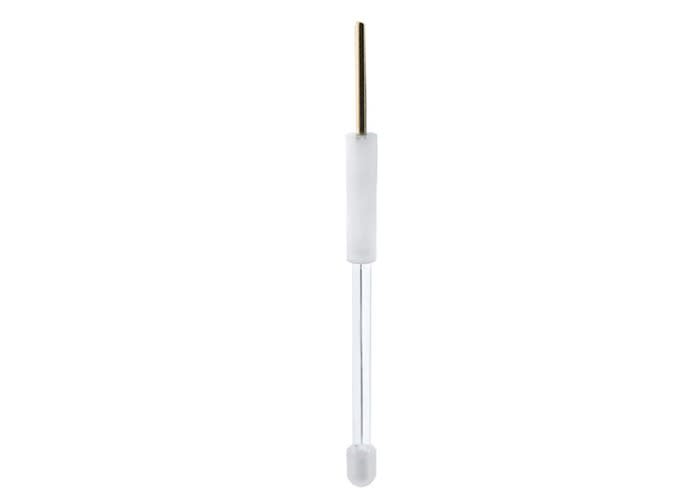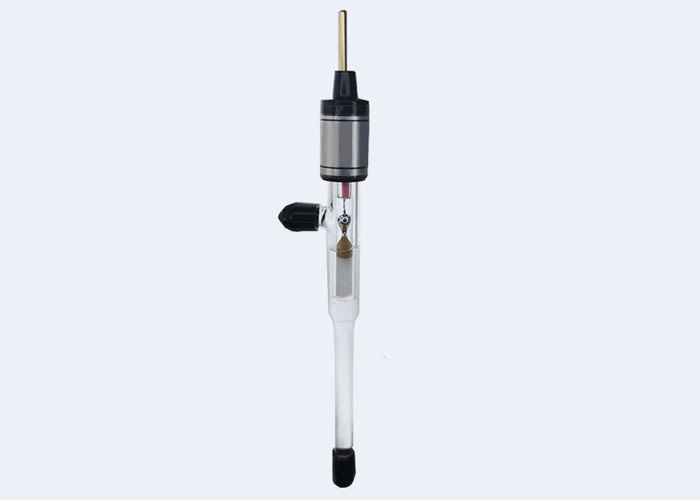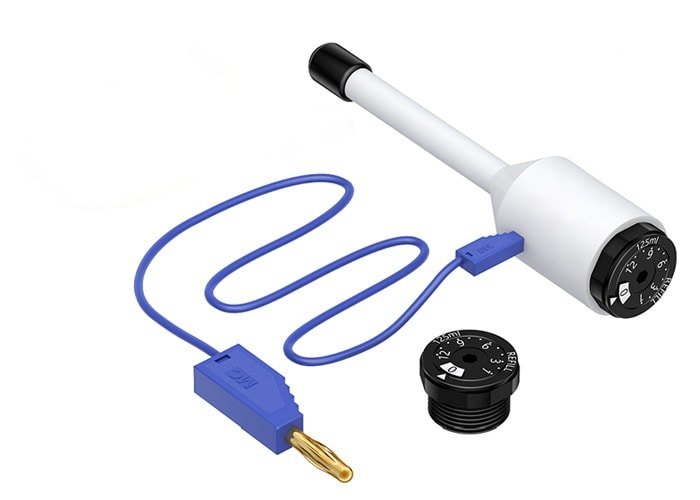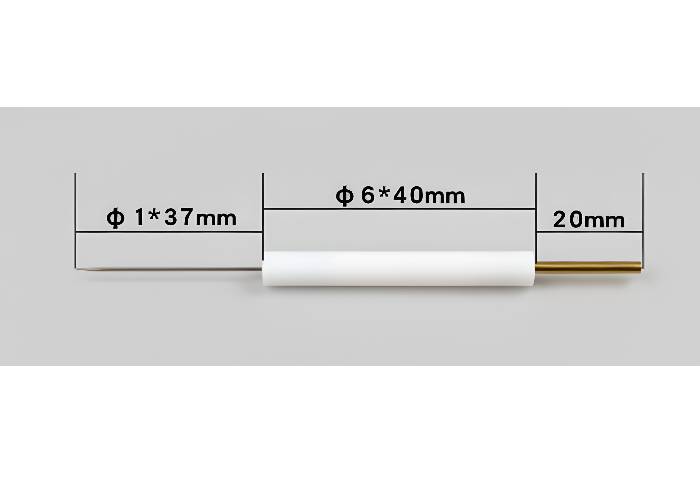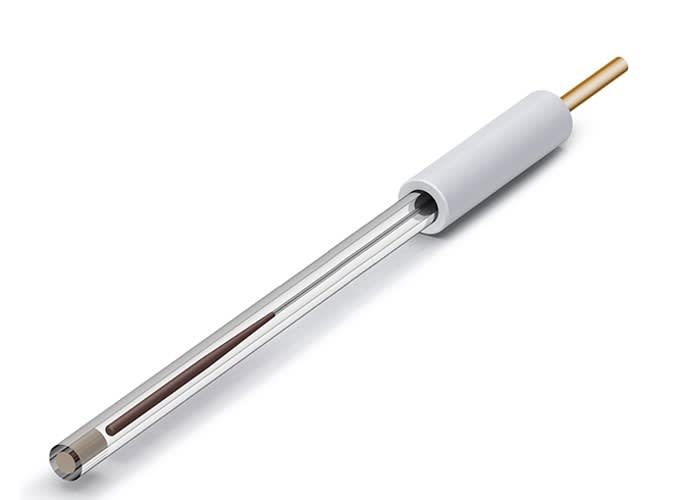
Ag/AgCl Reference Electrode
Silver/Silver Chloride Electrode provides stable, mercury-free +0.197 V vs SHE potentials in saturated KCl. Durable, refillable, ideal for corrosion, sensors & electrochemical research needing reliable reference standards.
Description
The Ag/AgCl (Silver/Silver Chloride) reference electrode is one of the most widely used and reliable reference standards for aqueous electrochemical measurements. Designed to deliver a stable, well-defined potential without the use of toxic mercury, it provides consistent results across a wide range of laboratory and industrial applications. At 25 °C, when filled with saturated potassium chloride (KCl), the typical potential of this electrode is approximately +0.197 V relative to the standard hydrogen electrode (SHE or NHE). When different KCl concentrations are used—such as 3 M or 1 M solutions—the potential shifts slightly, giving researchers flexibility to align with specific literature values, regulatory standards, or experimental method requirements.
Key Features and Technical Details
-
Mercury-free design: Environmentally safe and non-toxic, a preferred alternative to traditional mercury-containing electrodes.
-
Stable potential: Offers a reproducible and well-documented reference point suitable for high-precision electrochemical techniques.
-
Multiple filling solutions: Compatible with saturated KCl as well as 3 M or 1 M KCl solutions, depending on experimental needs.
-
Fritted junction: Provides a porous, ion-conductive barrier that ensures excellent ionic contact between the reference solution and the test electrolyte.
-
Refillable design: Extend electrode lifespan by regularly replenishing electrolyte, making it a cost-effective and long-term choice for research labs.
-
Versatile fit: Works seamlessly in standard three-electrode electrochemical setups with potentiostats, Luggin capillaries, and measurement cells.
Applications
The Ag/AgCl reference electrode is a versatile tool suited for a wide range of electrochemical investigations. Whether in academic research, industrial testing, or sensor development, this electrode provides the stability needed for reliable measurement. Typical applications include:
-
Corrosion studies: Measurement of corrosion potentials in metals and alloys under various environmental conditions.
-
Electrocatalysis research: Supporting catalyst evaluation for reactions like oxygen evolution, hydrogen evolution, or reduction processes.
-
Analytical electrochemistry: Conducting cyclic voltammetry, chronoamperometry, or impedance spectroscopy with precise reference stability.
-
Electrochemical sensors: Calibration and testing of ion-selective electrodes or biosensors.
-
General laboratory use: Routine voltammetric experiments, education, and teaching laboratories for standard electrochemical demonstrations.
Important Considerations
While Ag/AgCl electrodes are highly stable, they contain chloride ions as part of their internal filling solution. This makes them unsuitable for systems that are chloride-sensitive. For example, certain plating baths or measurements involving chloride-free redox mediators may require the use of a double-junction version of Ag/AgCl or an alternative such as a mercury/mercury sulfate (Hg/Hg₂SO₄) electrode. Selecting the right type of reference electrode ensures accuracy while preventing unwanted contamination of your electrolyte solution.
Usage and Maintenance Guidelines
-
Proper filling: Always maintain the internal filling solution above the level of the test electrolyte to avoid back-diffusion.
-
Bubble-free junction: Ensure that the porous/ceramic frit remains free from air bubbles to maintain proper ionic contact.
-
Cleaning: If fouling occurs, rinse carefully and replenish the filling solution as recommended.
-
Storage: Do not store the electrode dry. Keep it immersed in KCl solution of the same concentration as the filling electrolyte when not in use to prevent drying out of the junction.
-
Calibration checks: Regularly verify electrode performance against a standard electrode to ensure stability and accuracy.
Advantages Over Other Reference Electrodes
Compared to mercury-based reference electrodes, the Ag/AgCl design is safer, non-toxic, and easier to handle. Its potential is well-defined and less variable with temperature changes, which makes it particularly reliable for routine laboratory usage. Its affordability and ease of maintenance further add to its appeal as the most practical choice for everyday electrochemical research.
Product Description Summary
The Ag/AgCl reference electrode is a trusted, essential component in electrochemistry, providing stable and reproducible potentials without the hazards of mercury. With refillable options, durable fritted junctions, and compatibility with most electrochemical cells, it is ideal for corrosion analysis, catalysis research, sensor studies, and routine voltammetry. For long-term reliability, simply maintain electrolyte levels and store the electrode in KCl solution when idle. If your experiments demand a non-chloride environment, alternative electrodes such as double-junction variants or Hg/Hg₂SO₄ are recommended. By combining safety, performance, and longevity, this Ag/AgCl electrode remains the workhorse of modern electrochemical laboratories.
Resources & Downloads
Everything you need to get started
Reference Electrode FAQ & Maintenance Guide
Customer Reviews
Related Product
Explore our precision instruments designed for electrochemical research and energy applications
Still Wondering About Something?
Explore our FAQ for fast, clear answers to the most common questions—available 24/7.

